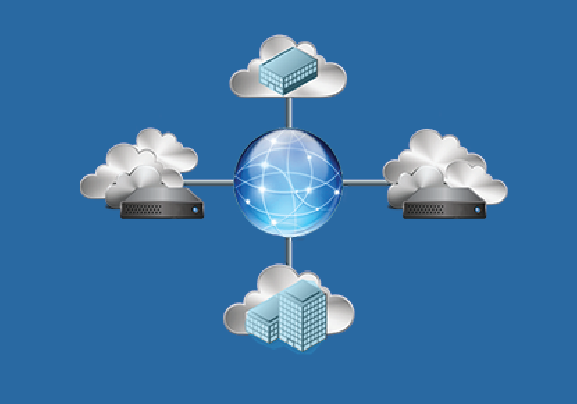Not all remote workers want to return to the office, as employees experience the benefits of working remotely, we see a drive in the enterprise IT market to opt for a hybrid workplace model. The shift to a hybrid workplace has accelerated cloud adoption, focusing on mobility, and how employees can collaborate and manage services.
Organizations are migrating their workloads to the cloud while still retaining some of their data centers to enable distributed workplaces, trying to ensure high performance at scale from their data centers, and to support geo-diverse branch and remote offices.
However, this migration brings networking and security complexities to the forefront. If you are an IT organization and if you are responsible for a broad distributed and growing network, you may be struggling with disparate interfaces. It becomes really challenging for the network teams to manage multiple platforms, keeping steps in mind for different interfaces to make changes, as opposed to having one centralized location that handles DNS, DHCP and IP address management (aka DDI) consistently throughout your entire infrastructure. The inability to consistently manage DDI core services in public and private clouds results in increasing disparities, and scalability issues. Moreover, with data, applications, and users more distributed than ever, the attack surface increases.
Many of the customers and prospects we meet use Amazon Web Services (AWS), to manage their cloud-based workloads, while also trying to manage their physical on-premises environments. This is where Infoblox, with it’s cloud-first networking and security approach, allows customers to leverage extensive integrations with AWS to achieve a simple, scalable and reliable networking and security experience.
With Infoblox on-premises Infoblox DDI and cloud-managed BloxOne® DDI, the network teams are able to have a unified view of their hybrid environments and it’s integration with Amazon Elastic Compute Cloud (EC2) ensures DNS and IPAM consistency across on-premises and cloud networks. The joint integration provides improved visibility of VPCs and EC2 instances making it easier to bring public cloud assets under common DNS and IP address management. The solution detects AWS virtual instances and tracks the resources within a single platform for complete visibility when new instances are created, as well as cleaning up records when instances are destroyed. As a result, the solution helps organizations simplify compliance reporting and ensures complete visibility and detailed audit of DNS and IP address information for AWS resources across networks and geographic regions.
Security is always a challenge with the growing numbers of users, devices, and things. This begs the question – how can you manage and protect global network traffic with layers of protection??
Powering AWS Global Network Availability and Footprint with Infoblox’s BloxOne® Threat Defense, you can use foundational DNS security to protect hybrid environments with threat detection, response, and ecosystem integrations. The ecosystem offers API integrations with security ecosystem tools, such as SIEM, SOAR, ITSM, vulnerability scanners, NAC, and endpoint security. Customers can secure their networks, devices, and users from cyberthreats on- and off- premises, including remote locations and home offices.

Managing hybrid environments can be complex. This is where Infoblox and AWS can make it easier for you to expedite your time to value. Together, the integrations help organizations to empower and meet the growing demands of today’s increasingly distributed enterprises.
For more information, check out this solution note: Infoblox and AWS: Enabling the Modern Workplace








